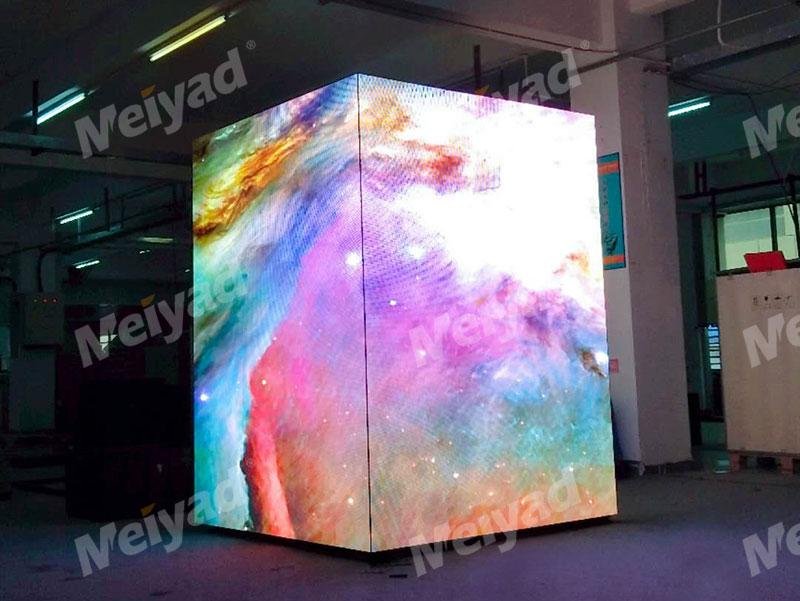Many friends who have just come into contact with the LED display are curious as to why they are required to wear protective covers such as shoe covers, electrostatic rings and static clothing when visiting many LED display workshops. To understand this problem, it is necessary to mention the knowledge related to electrostatic protection in the production and transportation of LED displays. Many LED displays have dead lights or the light turn dark, mostly due to static electricity.
Source of static electricity during LED display production.
1. Object, material.
2. Floor, work desk and chair.
3. Work clothes, packaging containers.
4. Painted or waxed surfaces, organic and fiberglass materials.
5. Cement floor, painted or waxed floor, plastic floor tile or floor leather.
6. Chemical fiber overalls, non-conductive work shoes, clean cotton overalls.
7. Plastic, packaging box, case, bag, tray, foam pad.
Meiyad P2.976 Outdoor LED Display
Harm of static electricity in the production process of LED display If the anti-static is ignored in any part of production, it will cause the electronic equipment to malfunction or even damage it. When the semiconductor device is placed alone or mounted in a circuit, even if it is not powered,permanent damage to these devices may occur due to static electricity. As we all know, LED is a semiconductor product. If the voltage between two pins or more pins of the LED exceeds the breakdown strength of the component medium, it will cause damage to the component. The thinner the oxide layer, the greater the static sensitivity to the LED and the driver IC.Such as the solder is not full, the quality of the solder itself, etc., will cause serious leakage paths, resulting in devastating damage.
Another type of failure is caused by the temperature of the node exceeding the melting point of semiconductor silicon (1415 °C). The pulse energy of static electricity can generate localized heat, so there is a direct breakdown of the lamp and the IC. This failure occurs even if the voltage is lower than the breakdown voltage of the medium. A typical example is that the LED is a diode composed of a PN junction, and the breakdown between the emitter and the base causes a sharp drop in current gain. After the LED itself or the IC in the drive circuit is affected by static electricity, functional damage may not occur immediately. These potentially damaged components are usually displayed during use, so it is fatal to the life effects of the LED products.
The LED display produce process is a very rigorous and subtle process, and every step must not be overlooked. The static electricity protection of the LED display screen is also an important part of the LED display production. At present, people in the industry are not deeply aware of the electrostatic protection, and can not meet the needs of professional LED display production. More professionals are needed to continuously research and share discuss.
How to prevent static electricity in LED display production:
1) Training of static-electricity knowledge and related technologies for personnel using static sensitive circuits.
2) Establish an anti-static work area,use static-discharge floor, anti-static workbench, anti-static grounding line and anti-static device in the area, and control the relative humidity to 40 or above in the area.
3) The damage caused by static electricity to electronic equipment may occur anywhere from the manufacturer to the field equipment. The hazard is caused by insufficient, effective training and equipment failure. LEDs are devices that are sensitive to static electricity. INGAN chip are generally considered to be the first susceptible to interference, and “ALINGAPLEDSSHI” is the second.
4) ESD damaged devices can show dim, blur, extinction, short or low VF or VR. Devices damaged by ESD will be confused with electronic overloads, such as: incorrect current design or drive, wafer attachment, wire shield grounding or packaging, or common environmental induced pressure.
5) ESD safety and control procedures: Most electronic and optoelectronic companies have very similar ESD problem and have successfully implemented ESD control, manipulation and main programs for their equipment. These programs have been developed by ESD for testing quality effects, and ISO-9000 certification also includes ESD in normal control procedures.

